Mercedes has an SUV for every season and its GLB and GLC models are both great choices for family buyers.
If you're familiar with car-naming conventions, you might expect the GLC to be a slightly larger version of the GLB, since it's one letter up in the alphabet. However, they approach the job of being a family SUV from slightly different starting points – the GLB being based on the compact A-Class, while the GLC borrows underpinnings from larger Mercedes models.
We've driven both to help you choose the best posh family hauler for you. Both are available as used cars from Motorpoint with thousands off their list price.
Mercedes GLB vs Mercedes GLC compared
| Mercedes GLB | Mercedes GLC |
Pros:
| Pros:
|
Cons:
| Cons:
|
Styling and design
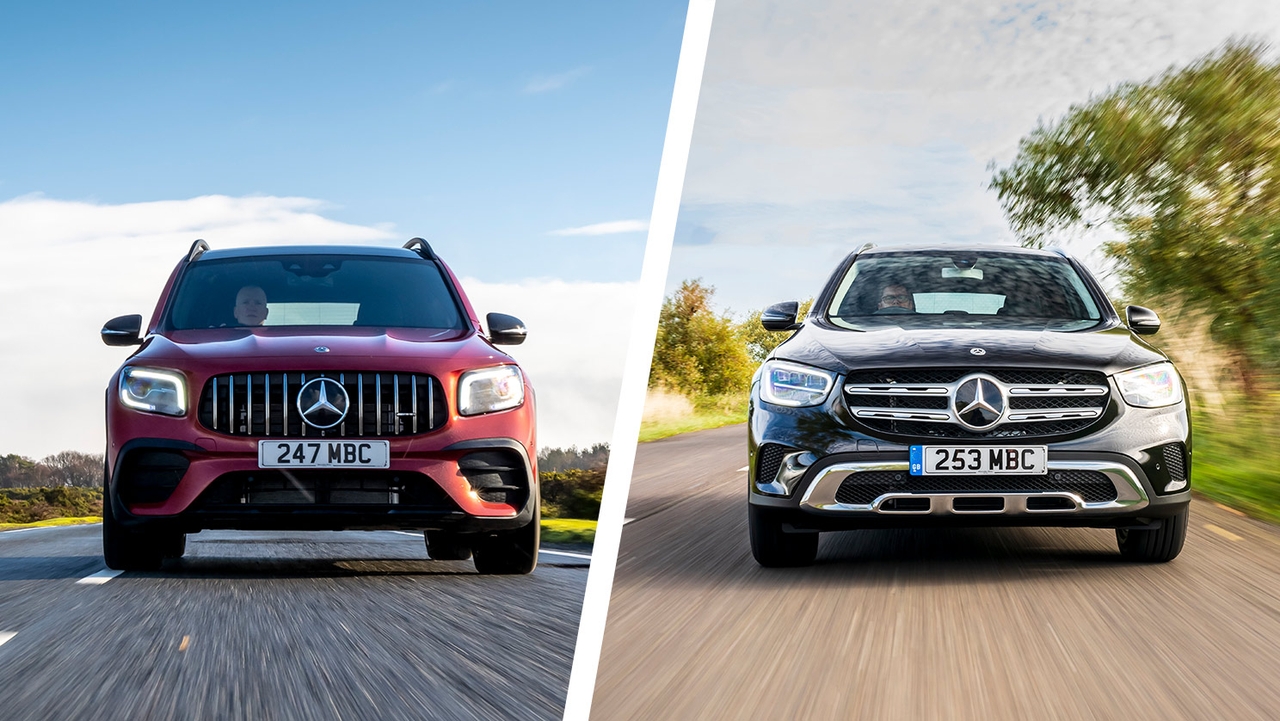
Both the GLB and GLC are obviously Mercedes SUVs but they go about it in different ways. The GLB draws some inspiration from the larger G-Class – Mercedes' '70s off-road icon – with a fairly square profile and a mostly flat roof. Its squared-off headlight units also give the car a broad, upright appearance.
In contrast, the GLC has a slightly more modern crossover-style SUV profile. It's still a large and practical shape, but there are more obvious curves and creases on the body mimicking other large Mercedes models. Park them side-by-side and you'll also spot that the GLC is noticeably larger in all key dimensions, giving it a slightly more imposing presence when it pulls up.
Mercedes launched a new generation of GLC in late 2022 but these aren't yet common on the used market so most buyers will be looking at recent examples of the outgoing model. The brand has taken an evolutionary approach to the new car's styling, however, so most of its benefits are readily found on its predecessor at a far lower starting price.
Interior and practicality
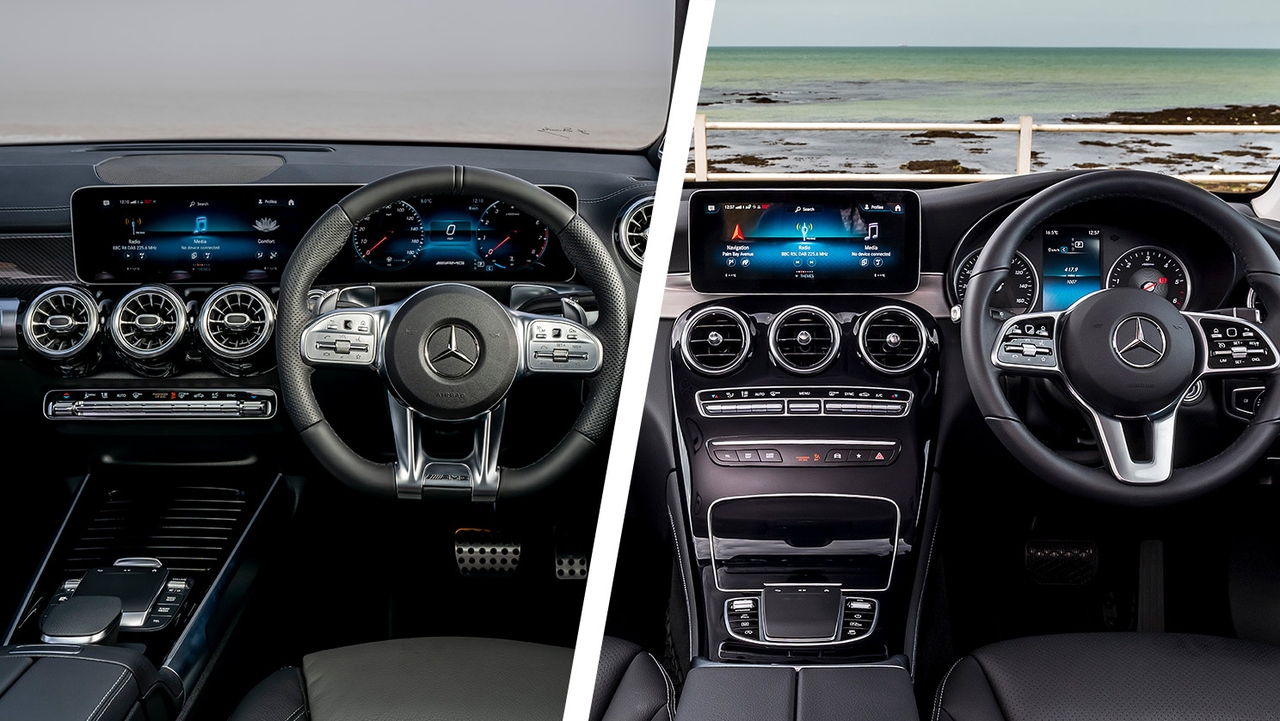
Much of the hardware inside the GLB is shared with other compact Mercedes models like the GLA and A-Class. That's generally a good thing, with a modern-looking double-screen pod on top of the dashboard, simplified climate controls below them, and a handful of driving controls scattered across the centre console. Material quality is high, with lots of leather and metal-effect touch points throughout the cabin.
The GLC is a little older, sharing its cabin design with the previous-generation C-Class. Again, however, that's not really a drawback considering the extensive use of wood, metal and leather on key surfaces. Little clues to the car's age like the traditional clock-style dials ahead of the driver and the fairly average-sized screen give away its advancing years, but all the key functions are easy to access once you've located them.
More important in this class is practicality, and the GLB earns broadly high scores in this area. Its headline benefit is the seven seats in its cabin, but the third row isn't actually very useful. To put passengers back there, you'll have to slide the second row all the way forward, and will probably need front seat occupants to squash forwards, too – compromising everyone in the car just to use all the seats. Fold the third row away and treat the GLB as a five-seater and it makes much more sense. You can slide the second row all the way back giving lots of rear passenger space, plus a vast, square 500-litre boot that's perfect for pushchairs or pooches.
There's no vestigial third row in the GLC – it's a five-seater only, and its all the better because of it. Passengers in the front and rear get lots of space to stretch out, emphasising the GLC's more luxurious billing, plus a lofty seating position that gives you a commanding view of the road ahead. The boot is 550 litres – another strong figure that'll probably be plenty for GLC owners.
Engines and performance
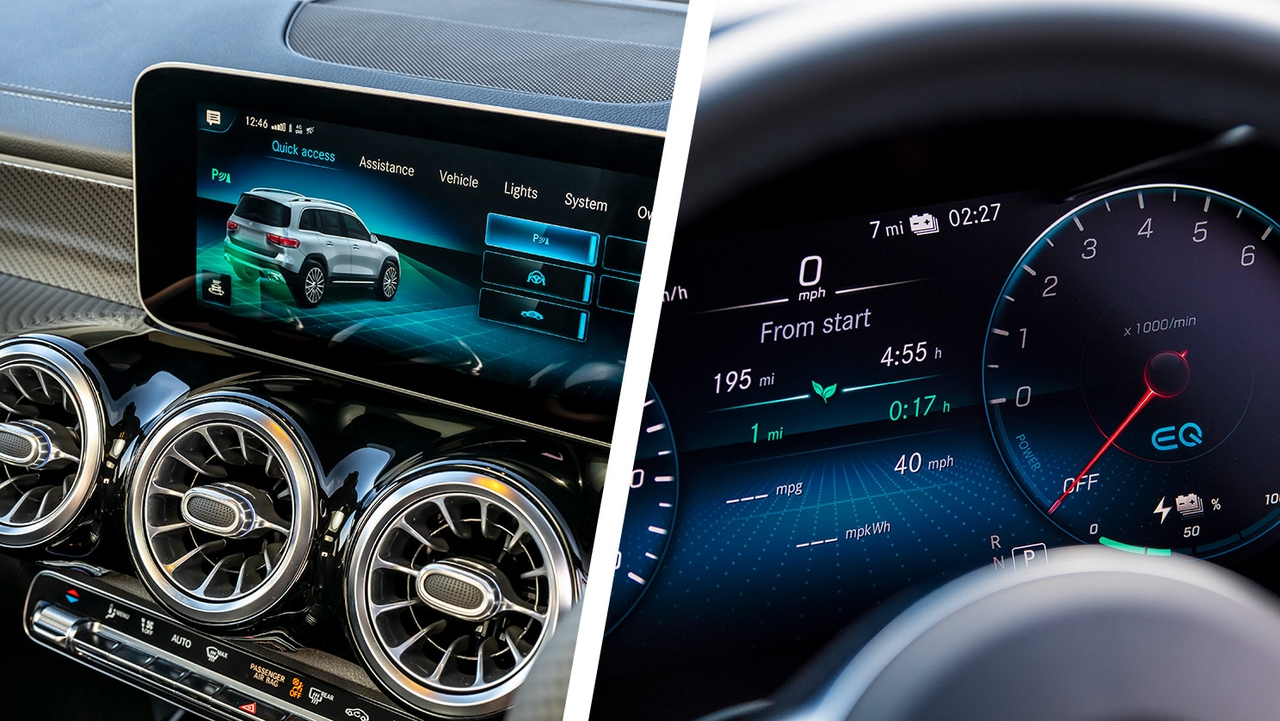
You can get several engine options under the GLB's bonnet – all of which are shared with the smaller A-Class hatchback. Most drive the front wheels only for efficiency, but the firm's 4Matic four-wheel-drive system is available further up the range. Even the entry-level 1.3-litre GLB 200 petrol has enough punch to get the car up to speed although it can feel a little strained, while the 2.0-litre diesel options in the GLB 200d and GLB 220d models have lots of low-down torque for effortless acceleration. Our only real criticism here is that the engines can be a little noisy if you lean on the throttle, sending an audible drone into the cabin.
The GLC is a larger car using the same platform as several bigger Mercedes models. As a result, you'll find larger, more powerful engines fitted as standard although, considering it weighs more than the GLB, performance is fairly similar across the range. Refinement is generally a little better than the GLB, however, with less grumble from under the bonnet under acceleration, which helps the GLC feel a little more luxurious when you're just cruising around. Be aware, however, that the GLC's larger engines and greater weight mean fuel economy and emissions performance lag noticeably behind the GLB.
If you're looking for something a little special, Mercedes' AMG performance boffs offer beefed-up versions of both cars. For the GLB, you'll find the 35 AMG engine option – a 2.0-litre turbocharged four-cylinder petrol with 306hp and hot-hatch-beating performance. As for the GLC, the fast selection kicks off with the V6-powered 43 AMG, which can show the GLB a clean pair of heels – or you can upgrade to the full-fat 63 AMG, with a turbocharged V8 engine and near-supercar levels of performance.
Driving

Mercedes drivers aren't usually looking for the sportiest car in the segment. Instead, it's about how effortless the car is to drive, with enough comfort, composure and security on the road to ease you to your destination without raising your heart rate.
The GLB performs quite well in this regard. It has excellent body control over bumpy roads and feels planted through corners – more than you might expect for a car this tall. The controls make sense, too, with plenty of precision to the steering and quick-witted responses from the pedals. It copes admirably when pushed harder but you quickly start to feel the car's weight if you drive it like a hot hatch. Our only real complaint is that a little too much engine noise makes its way into the cabin under hard acceleration, particularly on petrol versions.
Many of the same qualities are found in the GLC's driving experience. It's generally comfortable and composed, with a sense of ease to the controls. You'll notice the car's greater mass, however – it rolls a little more in corners and pitches forwards and backwards more dramatically if you stamp on the pedals. That's not to say it's bad, though, because the extra sense of weight helps the GLC feel even more stable on the move. The GLC's bigger, more powerful engines offer a similar range of performance as the GLB's lineup, but they're a bit quieter on the whole.
Value and reliability
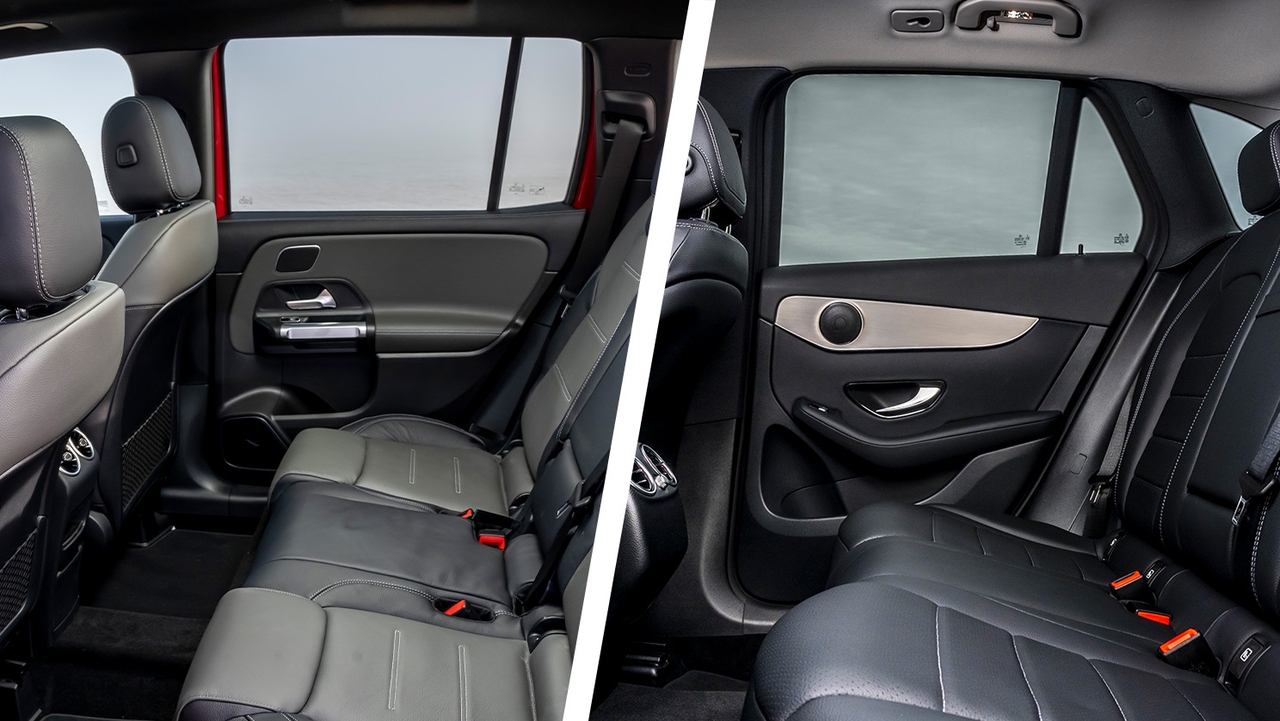
You don't need a calculator to see the GLB is more affordable than the GLC – both as a new car and on the used market. It's a smaller vehicle that's positioned lower in the brand's range. However, your budget might cover both the higher end of used GLB prices and the lower end of used GLC models, so which should you pick?
Looking at nearly new examples, the GLB feels like a slightly more modern car inside. It has a slicker infotainment interface and all the practicality a family of four could ask for – as well as the option to occasionally carry more passengers for short hops. We have few complaints about its on-road manners but it can't quite match the GLC's 'bank vault on wheels' sensation, nor the outright luxuriousness of its cabin.
If you're leaning towards a nearly new GLC, you should also consider that the latest model's launch in 2022 means prices for its predecessor have softened somewhat. This has reduced the gap between GLBs and GLCs on the used market, meaning it could only be a few extra thousand pounds to put the posher, larger car on your drive.
Like many premium German cars, neither the GLB nor GLC top reliability surveys. This is less a reflection of any mechanical issues and is generally caused by the fact premium cars often come loaded with on-board equipment and, thus, have more potential points of failure. Buy an extended warranty with either car to protect yourself from unexpected repair costs.
Which is best?
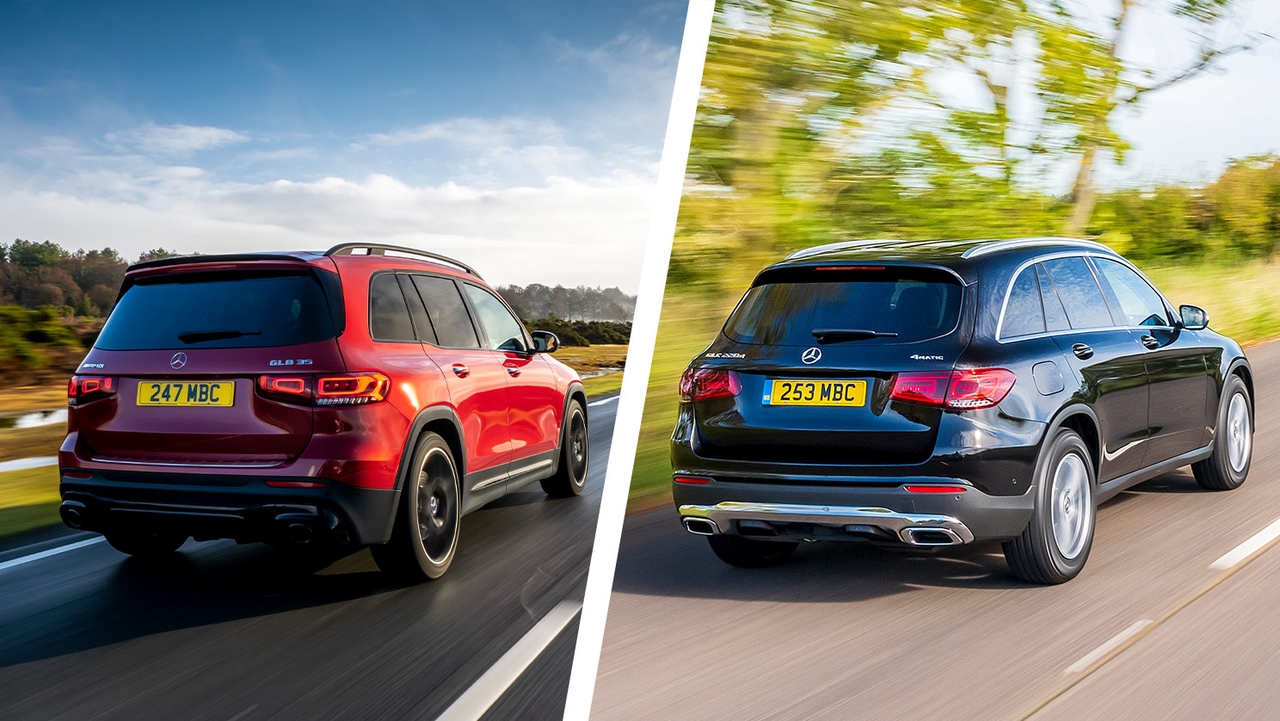
We think few family buyers will find anything to complain about if they pick the GLB. As long as you don't need all seven seats on an everyday basis, it's a great choice with lots of practicality and an easygoing experience in the cabin and on the road.
By several objective measures, the GLC makes less sense. It's heavier, has fewer seats and is more expensive to buy and run. However, there's something about its extra weight and size that helps it feel more like a 'Mercedes' – it has a more imposing presence, both when you're cruising down the road and once you're parked up. Plus, it feels a touch more luxurious than the GLB from its stylised design to its more refined engines.
Save thousands on the brand-new list price by buying or financing a used Mercedes GLB or used Mercedes GLC from Motorpoint. Check out our picks for the best luxury SUVs on sale to see more choices.

































